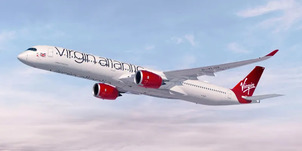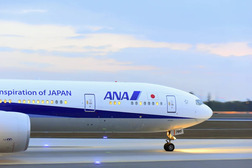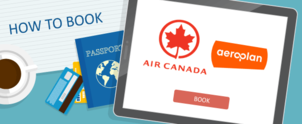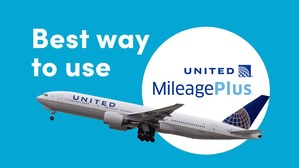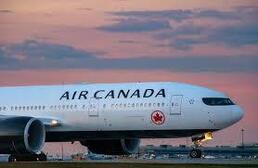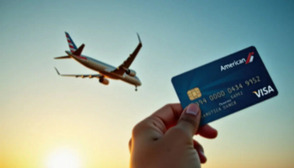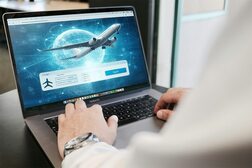- 11 Feb, 2025
- Travel tips
When flying with babies, you need to take extra care. When an airplane changes altitude, the pressure difference can cause discomfort in a baby's ears due to the small size of their Eustachian tubes, which are responsible for equalizing pressure. Thus, this can manifest as ear pain or fullness, especially during takeoff and landing, and can sometimes lead to crying or fussiness in babies. While flying with babies, you need ear protection for an airplane as babies' ears are still developing, and their ear canals and inner ear hair cells are more sensitive than adults.
Babies should wear ear protection, and protect their ears during flight, especially during takeoff. The noise levels in the airplane cabin can be deafening, and noise that's harmful to adults can be even more damaging to children. Thus, there is a respective reason why babies need ear protection. The following are mentioned below; get updated.
- Noise levels: Airplane cabin noise can reach 100 decibels and is even louder during takeoff.
- Hearing loss: Noise-induced hearing loss can be a risk for babies and children.
- Sleep and relaxation: Ear protection can help babies sleep or relax during the flight.
How do I protect my child's ears when flying?
There are several ways you can protect the child's ear on a phone. Choose any of your preferred modes for baby ear protection, using the following methods. To protect a child's ears on a plane, you can use earplugs, noise-canceling headphones, or try sucking on a pacifier or candy. To know about the following briefly, look at the information as mentioned and get further updates.
Earplugs:
- EarPlanes: These hypoallergenic silicone earplugs are designed to relieve ear discomfort and regulate air pressure. You can use them on your babies for ear protection.
- Flight Ear Plugs: You tend to get the earplugs in a car and house them for your kids, as these pressure relief earplugs are designed for children to protect their ears.
Noise-canceling headphones:
While traveling with babies, ensure that you or the child carry noise-canceling headphones. These headphones can help reduce the loud noise of the airplane cabin and are a great source of protection for babies.
Sucking on a pacifier or candy.
- The sucking motion can help equalize pressure in the eustachian tube; you can give candy to the child at the time of take-off, such as sucking in a pacifier or candy with help with ear blockage.
- Hard candy can work for older children; when the child is relatively older, offer them the hard candy that will help them with the noise cancellation breakage.
Chewing gum
Chewing gum before takeoff and landing can help with the change in pressure in your throat. This is the best trick while flying an aircraft.
Should a 1-year-old child wear headphones on a plane?
Headphones may be unsafe for a 1-year-old child on a plane because their ears are still developing. Thus, other methods tend to protect your child's ear during a flight. The headphones might not be safe for a 1-year-old, as most experts recommend avoiding headphones for children under two. The noise levels in an airplane cabin are loud, especially during the takeoff.
Therefore, there are other ways that you can try instead of putting headphones on a one-year-old child. The following are the following.
- Use ear muffs or earplugs: These can help limit your child's exposure to noise and are safe for the child's hearing health.
- Encourage swallowing: Give your child a bottle or pacifier to suck on during takeoff and landing, and this will be helpful.
- Try the Toynbee maneuver: Pinch your child's nose closed and have them swallow. There is an alternative way to protect a one-year-old.
- Breastfeed: Breastfeeding can help ease your child's airplane ears, and there is a constant moment of the mouth that will help with the functioning.
What can be used for ear protection?
Earplugs, earmuffs, and noise-canceling headphones can be used to protect your ears from loud noises. Thus, there are different categories for
Earplugs:
Special earplugs designed for babies, like EarPlanes, can help regulate pressure.
- Pre-molded: Come in a preformed shape and are easy to take on and off
- Formable foam: Can be molded to fit your ear
- Custom-made: Can be made to fit your ear and allow some natural sound in
- Disposable or reusable: Can be thrown away after use or reused
Earmuffs:
- Safety earmuffs: Have sound-attenuating material and soft ear cushions
- Hard outer cups: Fit around the ear and are held together by a headband
Noise-canceling headphones:
- Can block out environmental noise, like engine noise on planes or trains
- It can be used for commuting, working, or enhancing your listening experience
- Noise-canceling headphones Can help reduce the overall noise level.
- Cotton balls can help decrease the decibel level your baby is exposed to.
The other ways to help protect the baby's ear on an airplane
There are other ways to protect your baby's ear while traveling by air or airplane. Thus, to get information about the following, look at the information mentioned below and get updated with the following.
- Encourage swallowing by giving your baby a bottle or pacifier to suck on during ascents and descents.
- Have your child sit up while drinking.
- Avoid decongestants, which aren't recommended for young children.
Conclusion
The information, as mentioned, concludes that, while traveling with babies on an airplane, it is essential that you protect your baby's ears by following several precautions; choose any of the preferred options from the following, respectively.
